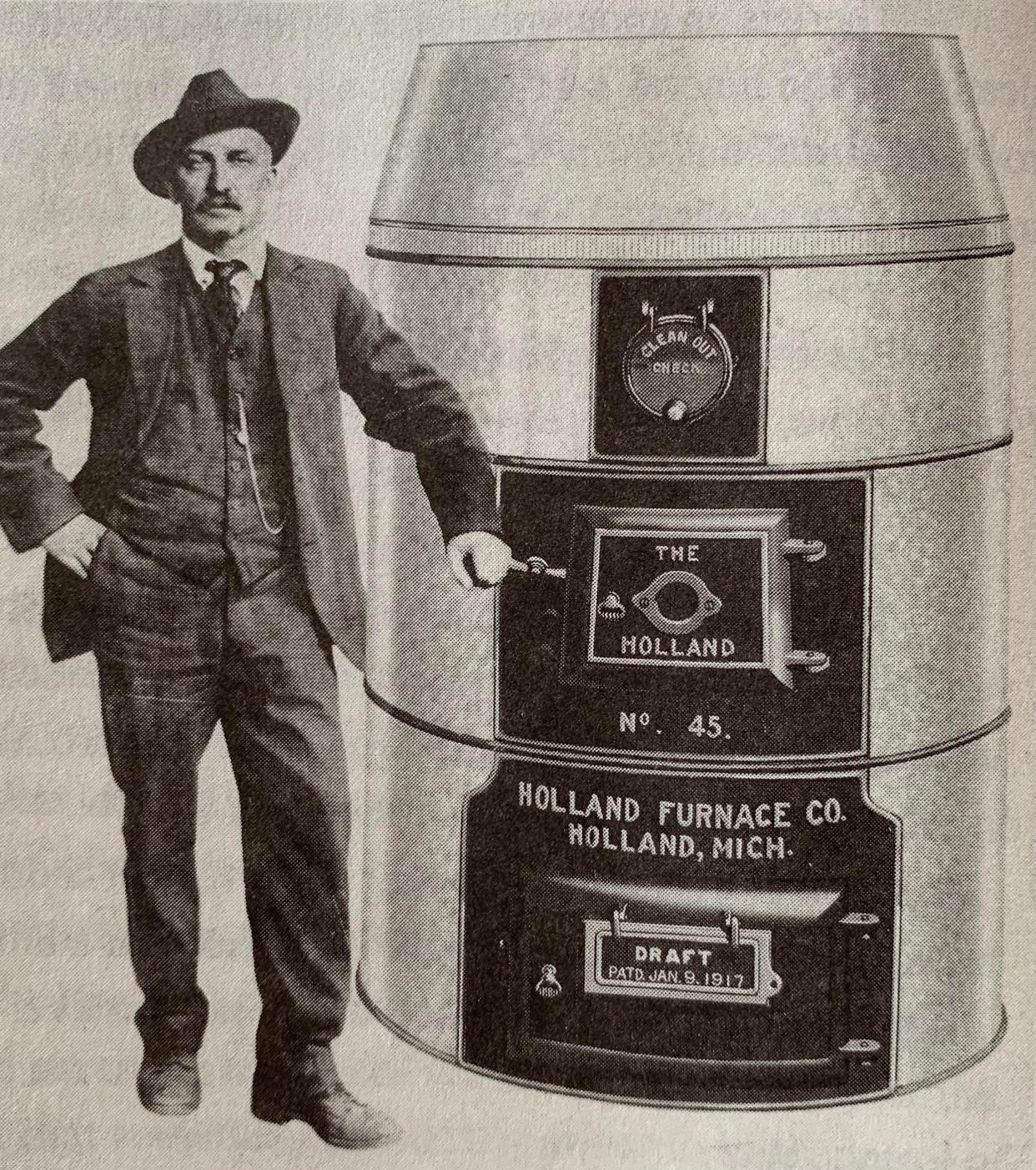Steve VanderVeen: The tinkerer in overalls and Holland Furnace Co.

John Kolla was the tinkerer in overalls. August Landwehr was the polished salesman.
In 1879, Jean (John) Pierre Kolla immigrated to the United States from France to avoid compulsory military service. He settled in Massillon, Ohio, where his parents and girlfriend, Caroline Medinger, joined him. John and Caroline married in 1880. Together, they had four daughters, including Louise and Katherine.
More:Arend Visscher and James Huntley lived on a hill
More:The many hats of former mayor William Beach
In 1891, the Kollas moved to Akron, Ohio. There, John worked for several furnace companies and began tinkering with a new type of coal furnace.
Landwehr, meanwhile, was born in New Melle, Missouri, in 1880. He attended the Gem City Business School of Quincy, Illinois. At just 16 years old, he landed a job with a St. Louis publisher, Dumont and Company, where he chose to start as a messenger.
Over the next few months, he served in every position in the office. Dumont and Company ultimately sent him to Akron, Ohio, to supervise its publishing services. There, he so impressed the company they sent him to their headquarters in New York.
Then he took a job with the R.S. Belcher Company of Pittsburgh, another publishing company, and led a team of 128 salesmen. Next, he invested in the Reliable Match Company of Ashland, Ohio, and served as its treasurer and general manager. Sixteen months later, he sold his share of the business.
Along the way, he developed a formula for success: “Prepare for the job ahead, fill the present job completely, (and) help the man behind you.”
While in Ashland, Landwehr met Louise Kolla. They married in 1904. Her father, John Kolla, recruited August to help him start a furnace company.

Meanwhile, in Holland, Michigan, a group of business leaders was forming the Holland Improvement Committee and the Industry Bonus Plan.
Magic happened when G. P. Bowman — who had relatives in Holland — took Kolla and Landwehr on a trip to scout the city. They were attracted by Holland’s harbor, which they'd need for shipments of pig iron; sand, for making molds for foundry castings; land, for their factory in Prospect Park; and capital.
In 1906, Landwehr and the Kollas started Holland Furnace Company.
At first the co-founders lived on Pine Street and started making furnaces in their basements. To get capital, they asked their neighbors — the Beaches, Bosmans, Cooks, and Marsiljes — who agreed to provide loans. Landwehr convinced them to become investors. Other investors joined in.
Initial board members included Kolla and Landwehr plus Arend Visscher (President), William Beach (Vice President), Charles McLean (Secretary), G.P. Bowman (Treasurer and Manager), and Jacob G (“White Jake”)Van Putten — plus additional investors Henry Kremers and Walter Walsh. Not only did they open in Prospect Park, but the co-founders moved their homes to the northeast corner of Lincoln Avenue and 16th Street.
In 1907, Katherine married Oscar Nystrom. Born in Sweden in 1883, Nystrom came from Chicago to Holland in 1905 with Walter Lane and his company. Nystom, like Kolla, was a product and production innovator.
Holland Furnace first sold to dealers, like hardware stores. In the first year, they produced 240 furnaces and shipped 75, of which 40 went to Grand Rapids. To aid customers, Kolla developed a unique window coal chute. But the furnace was challenging to install, causing dealers to install them improperly and resulting in customer complaints and bad word-of-mouth.
Dealers preferred selling other, more familiar, brands. Landwehr made an important strategic decision: Holland Furnace Company would put their own sales and installation team in Grand Rapids. In 1908, sales in Grand Rapids tripled. Landwehr decided to create his branch office system throughout the county.
Soon, Holland Furnace was producing and selling five furnaces per day. During the summer, Kolla would provide a barrel of beer in the foundry for men to drink. One production worker was a recent immigrant named Hendrik Meijer, the future founder of Meijer stores.
Because it was growing so fast, Holland Furnace needed capital. In 1910, it got a loan from People's State Bank. It helped that two of its board members were also board members at the bank: Arend Visser and William Beach.
With capital, seasoned management, and innovative manufacturing and marketing expertise — plus the ability of its co-founders to relate to their workforce and community — Holland Furnace continued to grow rapidly.
— Community Columnist Steve VanderVeen is a resident of Holland. Contact him through start-upacademeinc.com.
This article originally appeared on The Holland Sentinel: Holland History: The tinkerer in overalls and Holland Furnace Co.

